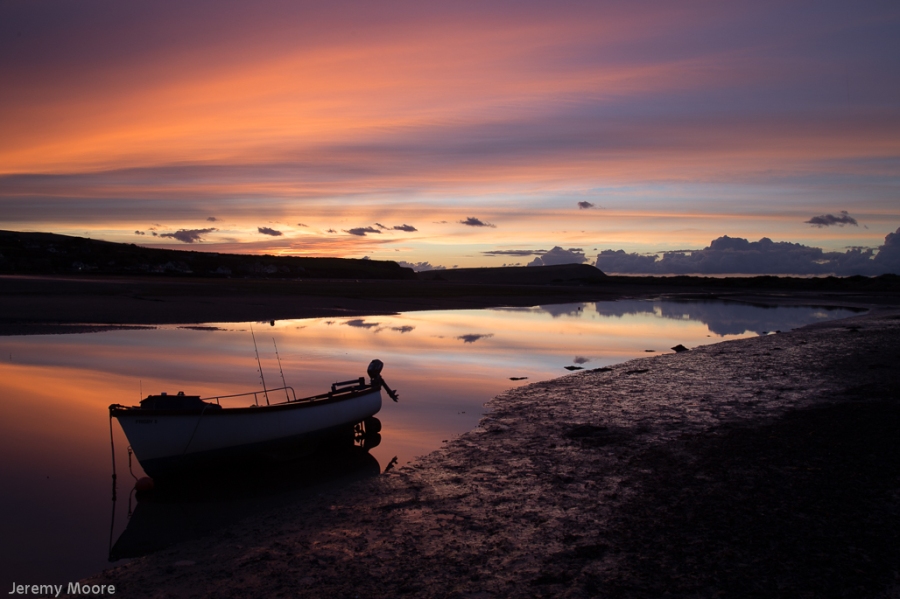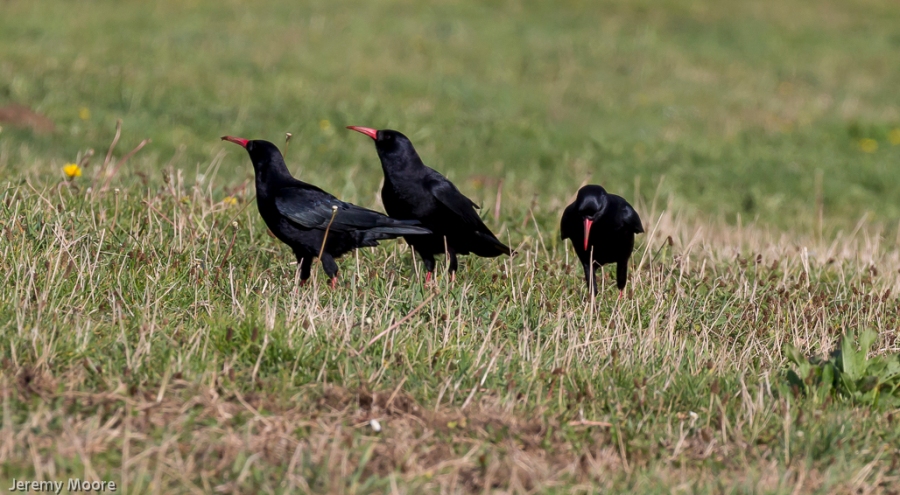
About ten days ago a break was forecast in the almost unremittingly cloudy weather we have endured recently here in west Wales. After consulting the details for a number of possible destinations I settled on another trip down to Pembrokeshire, with the Tenby area particularly in mind. It’s getting rather late in the year now but my postcard sales are still excellent in Tenby and a couple of new images of the area would not go amiss.
Needless to say it proved to be a frustrating trip. Conditions were clear and bright by mid-afternoon on the Saturday but I could not find a location I was happy with. Sunday morning again dawned clear but there was a complex blanket of cloud over towards the east at sunrise. No golden hour light then…………! As the morning developed I could see a veil of high cirrus cloud slowly but steadily working westwards. It was just keeping pace with the progress of the sun as it moved across the sky. I eventually concluded that my best chance of a decent photograph would be to head west myself and hope that the cloud would be lit from below by the sun as it set. So I headed for Newport in north Pembrokeshire.
As it turned out I was correct. As sunset approached I made way along the north bank of the Nevern estuary towards the beach. The cirrus sheet gradually became redder and redder. It was now or never! I quickly snapped just one image of a fishing boat moored in the estuary before hurrying downstream towards what I hoped would be better things. Of all the subjects the landscape photographer may tackle the ‘boat silhouetted against the setting sun’ image is probably the biggest cliché of the lot. But this was a truly stunning sunset and further downstream, despite an almost perfect reflection, I struggled to find a composition that worked. So it was fortunate that I had spent a few seconds on a subject I would normally pass straight by.
A few words about processing this image. In film terms RAW files are said to be the negative, the processed image the finished print. The basic, unprocessed file can be seen below for comparison purposes. It is drab and uninteresting compared to the actual scene, but more accurate in a way, as I explain below. My basic processing was as follows: I first moved the “blacks” slider in Lightroom to the left which had the effect of increasing the apparent colour saturation. Then I moved the “whites” slider to the right which brightened image overall without affecting the shadows. I then turned down the highlights to counteract the effects of the latter in the brightest sections of the sky. Finally (almost) I opened up the shadows, which is apparent in the distant hillside and the dinghy, for example.

Typically any subject set against a sunset will be rendered as a silhouette, and the original file is no exception. But over and over again, one sees images containing a perfectly exposed sunset and perfectly exposed foreground subject matter. In real life, even though our eyes have a better dynamic range than a digital sensor does, this would never be the case. I suppose it began with widespread the use of neutral density filters, but the trend has become unstoppable in the digital era (here, for example) and in particular with the combination of two or more differently exposed images of the same subject. It is almost as if we now expect to see the brightest highlights and into the deepest shadows at the same time. Are we actually beginning to see the world in a different way?
